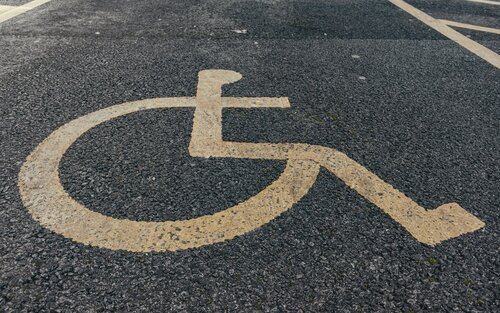4 International Frameworks Advocating for the Rights of Persons With Disabilities
Protection of the rights of persons with disabilities has become a global overarching theme. The international community is now more than ever focused on promoting the rights of persons with disabilities and their inclusion in the society. Here are four international frameworks that advocate for the rights of persons with disabilities.

Advocacy for Person with Disability (Unsplash)
-
1
Convention on the Rights of Persons with Disabilities (CRPD)
Adopted in 2006, the Convention on the Rights of Persons with Disabilities (CRPD) is the first legally binding international protocol on disability. The United Nations (UN) Convention promotes total integration of Persons With Disabilities in the society. It strives to ensure that persons with disabilities enjoy all human rights and freedoms without discrimination. Further, the Convention promotes respect for the inherent dignity of persons with disabilities.
CRPD applies the human rights principles contained in the UN Declaration on Human Rights (UNHDR) to the situation of persons with disabilities. Thus, CRPD can be said to be the UNHDR version for persons with disabilities.
Among rights that the Convention advocates for is persons with disabilities access to public spaces with as much ease as persons without disabilities (Article 9), and access to affordable assistive devices (Article 20). The Convention also prohibits the discrimination of persons with disabilities in employment on the basis of their disability (Article 27).
Kenya ratified CRPD in May 2008, thus committing to abide by the Convention’s guidelines in its approach to persons with disabilities.
-
2
International Principles and Guidelines on Access to Justice for Persons with Disabilities
The International Principles and Guidelines on Access to Justice for Persons with Disabilities are ten recommendations issued by the UN in 2020 to ensure that persons with disabilities have access to justice systems like anyone else.
The Principles recognize among other things that a person with disability has legal capacity, meaning that they are recognized by law (Principle 1). Further, legal capacity means that persons with disabilities have the capacity to make decisions on their own.
The Principles also require that justice facilities and services should be accessible to persons with disabilities (Principle 2). Further, the Guidelines recognize persons with disabilities right for free and affordable legal assistance (Principle 6).
-
3
Protocol to the African Charter on Human and Peoples' Rights (ACHPR) on the Rights of Persons with Disabilities in Africa
Adopted by members of the African Union (AU) in January 2018, the Protocol aims to “promote, protect and ensure the full and equal enjoyment of all human and people’s rights” by persons with disabilities. Further, the Protocol strives to “ensure respect for persons with disabilities' inherent dignity.”
The 44-Articles Protocol require State parties to undertake the necessary steps to promote, protect the rights and dignity of persons with disabilities, “without discrimination on the basis of disability.”
The four-year-old continental Protocol also outlines the rights of persons with disabilities. These include the right to equality, equal recognition before the law; and the right to life, education, work, and health. Other rights include the right to be free from torture or cruel, inhuman or degrading treatment or punishment and the right to participate in public and political life.
It further addresses the rights of persons with disabilities by categories. It addresses the plight of women and girls, children, youth, and older persons with disabilities and outlines the government's duty to each of these groups of people.
-
4
East African Community (EAC) Policy on Persons with Disabilities
Adopted by EAC members States in March 2012, the EAC Policy on Persons With Disabilities is the guiding document for member countries on matters relating to persons with disabilities. The Policy informs the policies and programs that affect persons with disabilities in the region.
According to EAC, the Policy resulted from an analysis on member State’s implementation of the Convention on the Rights of Persons with Disabilities (CRPD). The analysis identified some gaps in the implementation of CRPD, thus creating a need for a comprehensive yardstick such as the Policy.
Consequently, the EAC policy on persons with disabilities aims at providing an “enabling environment by Partner States for the empowerment of persons with disabilities to facilitate their effective participation in and their eventual benefit from development initiatives.”
